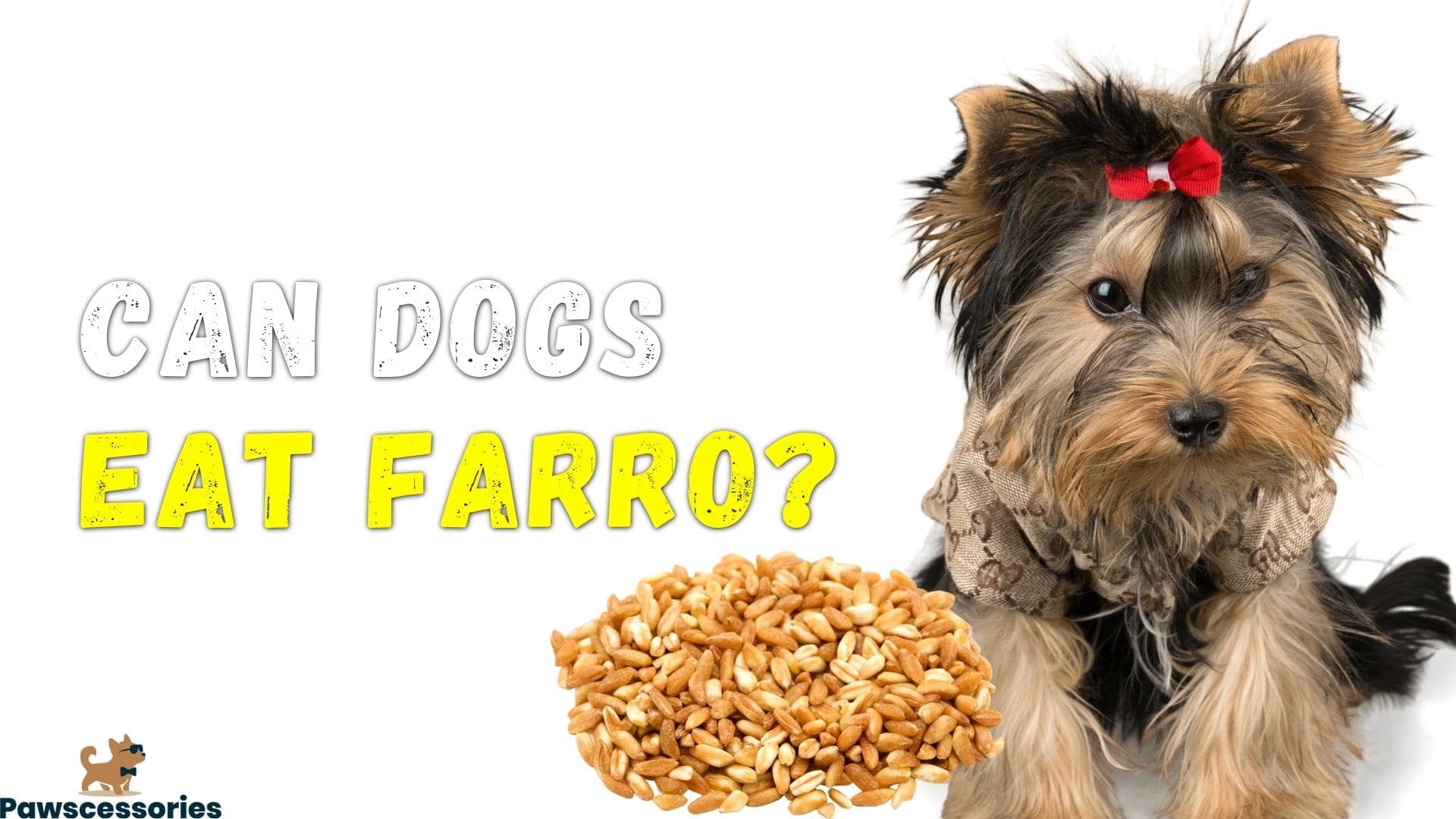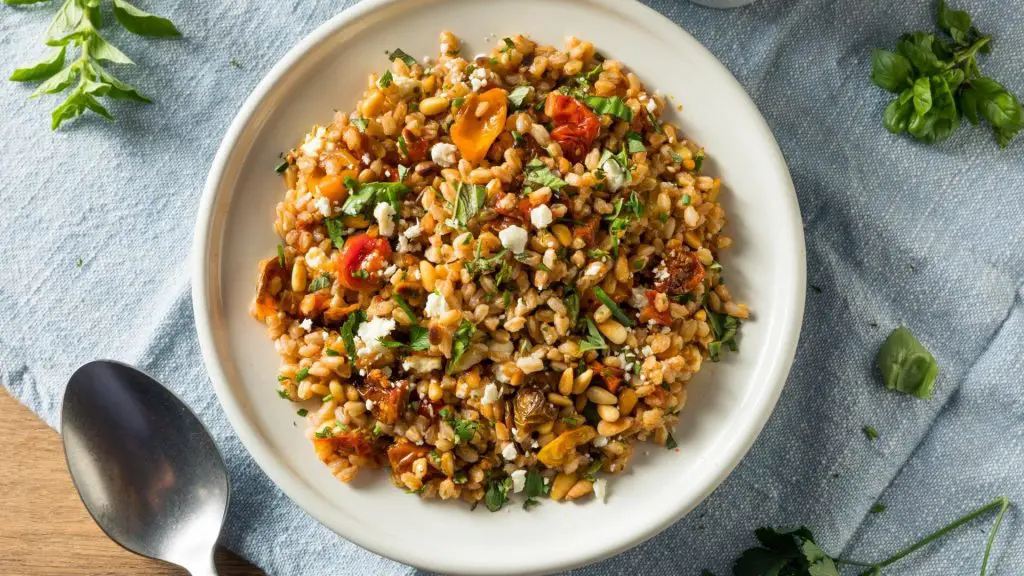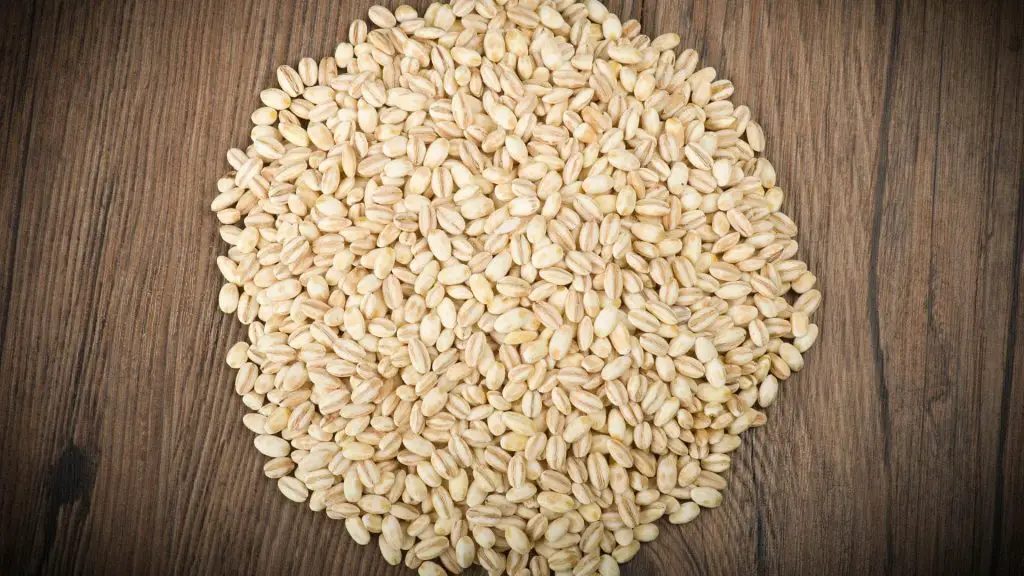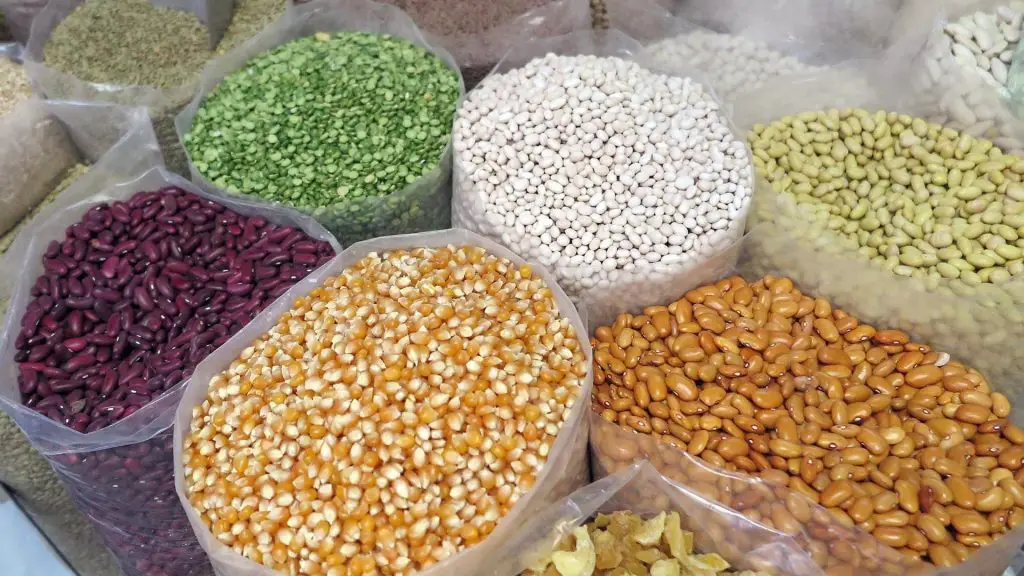Pawscessories is reader-supported. When you buy via links on our site, we may earn an affiliate commission at no cost to you.
Learn more.
Like most dog owners, you probably have a few questions about what your pup can and can’t eat. One food that sometimes sparks debate is farro, wheat, and other grains.
Can dogs eat farro? Is farro safe for dogs?
I reviewed the most up-to-date scientific research and spoke to experts in animal pet care about their opinions to find out.
In short, yes, dogs can eat farro. It’s a grain that’s safe for dogs to eat in moderation as part of a balanced diet. Farro is high in fiber and protein compared to other grains while also including significant amounts of healthful vitamins and minerals. The only risk is for dogs with allergies.
We will go into more detail on what you should look for when feeding dog farro and some of its dangers.
In this article, you’ll discover:
- Why farro can be good and bad for dogs to eat
- Danger and benefits of dogs eating farro
- How much farro grain you can feed a dog
- Other frequently asked questions about grain (answered by vets)
Let’s dive in.
Table of Contents

What Is Farro?
Farro is a type of wheat that has been around for centuries. It’s a whole grain that is chewy with a nutty flavor.
Its often used to describe three different wheat grains: einkorn, emmer, or spelt.
It’s considered an ancient grain because it’s been around for over two thousand years and was a staple in the diets of early civilizations.
Farro is higher in protein and fiber than other grains like rice or barley. It’s also a good source of vitamins and minerals, such as iron, magnesium, phosphorus, and zinc.
Ancient grains like farro are less processed than modern grains and have more nutrients.
Some other ancient grains are:
- Chia seeds
- Buckwheat
- Millet
- Emmer
- Quinoa
- Spelt
- Einkorn
Nutrition Facts
47 grams of organic, whole grain emmer farro contains:
- Calories: 170
- Carbs: 34g
- Fat: 1g
- Fiber: 5g
- Protein: 6g
- Vitamin B3 (niacin): 20% of the recommended daily intake (RDI)
- Magnesium: 15% of the RDI
- Zinc: 15% of the RDI
- Iron: 4% of the RDI
*keep in mind the RDI is for humans, not animal consumption.
Can Dogs Eat Farro?
The short answer is: yes, dogs can eat farro.
Farro is a whole grain packed with protein, fiber, vitamins, and minerals. It can be a healthy addition to your dog’s diet when fed in moderation.
However, you should keep a few things in mind before feeding your pup farro.
For example, some dogs may be allergic to wheat or other grains. If you’re unsure whether your dog is allergic to wheat, start by feeding them a small amount to see how they react.
If they have any adverse reaction, such as vomiting or diarrhea, discontinue feeding and talk to your vet.
It’s also important to cook the farro before feeding it to your dog. Raw farro can be hard for them to digest.
When cooked, the grain will be softer and easier on their stomach.
Another thing to keep in mind is that farro is high in carbs. While carbs are a necessary part of your dog’s diet, too much can lead to weight gain.
This is especially important for puppies. While farro contains healthy nutrients, it’s high in carbs.
Puppies require a diet high in protein and fat and low in carbs. Their little bodies are still growing and need the right amount of nutrients to support their development.

What Are The Health Benefits Of Farro For Dogs?
So you are probably wondering, Is farro grain good for dogs? Should I even bother feeding it to them?
Farro can be suitable for dogs If they do not contain allergies to wheat or gluten.
Its high protein content can help build and repair muscles. It’s also a good source of fiber, which helps with digestive health.
The vitamins and minerals found in farro are essential for many bodily functions, such as immunity, metabolism, and red blood cell production.
Farro can be a healthy part of your dog’s diet when fed in moderation. Here are some health benefits of feeding dogs farro:
Fiber & Protein
Farro contains more fiber than most popular grains. This can help with digestive issues like constipation and diarrhea.
The high protein content in farro also benefits dogs, especially active ones. Protein helps to build and repair muscle tissue.
Antioxidant & Nutrient Rich
Farro is a good source of vitamins and minerals, such as iron, magnesium, phosphorus, and zinc. These nutrients are essential for many bodily functions, such as immunity, metabolism, and red blood cell production.
Farro is also a great source of antioxidants like polyphenols, carotenoids, and selenium.
These antioxidants found in farro grain can help to protect your dog’s cells from damage.
Aids Digestion
As mentioned above, fiber is vital for digestive health. It helps to add bulk to stool and keeps things moving along the digestive tract. This can help to prevent constipation and diarrhea.
Improves Immune Function
The vitamins and minerals found in farro can help to improve your dog’s immune system.
For example, zinc is essential for the development of white blood cells. These are the cells that fight off infection and disease.
Iron is also important for immunity. In addition, it helps to carry oxygen to the cells, which aids in cell function and growth.
Blood Sugar Maintenance
Farro has a low glycemic index, which means it doesn’t cause a sudden spike in blood sugar levels. This is important for dogs with diabetes or who are overweight.
In fact, this also makes it great for dogs who need to lose weight.
Is Farro Bad For Dogs? Is It Safe?

Now that we’ve discussed the benefits let’s talk about the risks. Are there any dangers you should be aware of with dogs eating farro?
The main concern with feeding your dog farro is the risk of allergies or sensitivities to gluten or grain.
As mentioned above, some dogs may be allergic to wheat or gluten.
Signs of an allergic reaction in dogs include:
- Itchy skin
- Hives
- Swelling of the face or paws
- Vomiting
- Diarrhea
If your dog has any of these symptoms after eating farro, stop feeding it immediately and consult your veterinarian.
How Much Farro Can My Dog Eat?
Farro should not make up more than 15% of your dog’s diet.
For example, when feeding your dog a cup of food daily, only 1/6 of a cup should be farro.
For most dogs, this equates to about 1/6 cup of cooked farro per day.
Farro should not make up a majority of your dog’s diet.
Other Frequently Asked Questions
Can Dogs Eat Spelt?
Yes, a dog can eat spelt grain. It’s one of the three ancient grains typically referred to as farro.
It’s rich in vitamins, minerals, and antioxidants. It’s also a good source of protein and fiber.
However, some dogs may be allergic to wheat or gluten, so it’s important to watch for signs of an allergic reaction if they eat spelt grain.
Can Dogs Eat Emmer?
Yes, a dog can eat emmer grain. It’s one of the three ancient grains typically referred to as farro.
It’s rich in vitamins, minerals, and antioxidants. It’s also a good source of protein and fiber.
However, some dogs may be allergic to wheat or gluten, so it’s important to watch for signs of an allergic reaction if they eat emmer grain.
Can Dogs Eat Einkorn?
Yes, a dog can eat einkorn grain. It’s one of the three ancient grains typically referred to as farro.
It’s rich in vitamins, minerals, and antioxidants. It’s also a good source of protein and fiber.
However, some dogs may be allergic to wheat or gluten, so it’s important to watch for signs of an allergic reaction if they eat einkorn grain.
What Grains Are Safe For Dogs?

All grains are safe for dogs to eat so long as they do not have allergies or sensitivities.
Some of the most common grains fed to dogs include:
- Oats
- Brown rice
- Barley
- Buckwheat
- Quinoa
- Millet
- Flaxseed meal
What Grains Are Dogs Allergic To?
Dogs can be allergic to any grain, but the most common allergies are towards wheat, corn, and soy.
Please consult your veterinarian if you think your dog may be allergic to a particular grain.
Why Grains Are Not Good For Dogs?
There seem to be some miss conceptions about grains causing allergies. Dr. Littlejohn and Dr. Venator explained that veterinary medicine does not support this. There is no scientific evidence to suggest grains cause dogs to develop allergies.
Grains are an excellent source of nutrients for dogs. The only time grain would be considered unsuitable for dogs is when an allergy is present.
Can Dogs Eat Cooked Grain?
Yes, dogs can eat cooked grains. In fact, cooked grains are easier for dogs to digest than raw grains.
Cooked grain is also less likely to contain harmful bacteria than raw grain.
Final Thoughts
So, can dogs have farro?
Yes, dogs can eat farro in moderation.
Farro contains more fiber and protein than other grains and is also rich in vitamins and minerals.
Just be careful of allergies to wheat or gluten. Otherwise, it’s entirely safe for dogs to consume.
Other posts you might find interesting:
Can Dogs Eat Corn Starch? Benefits & Risks (Vet Answers)
